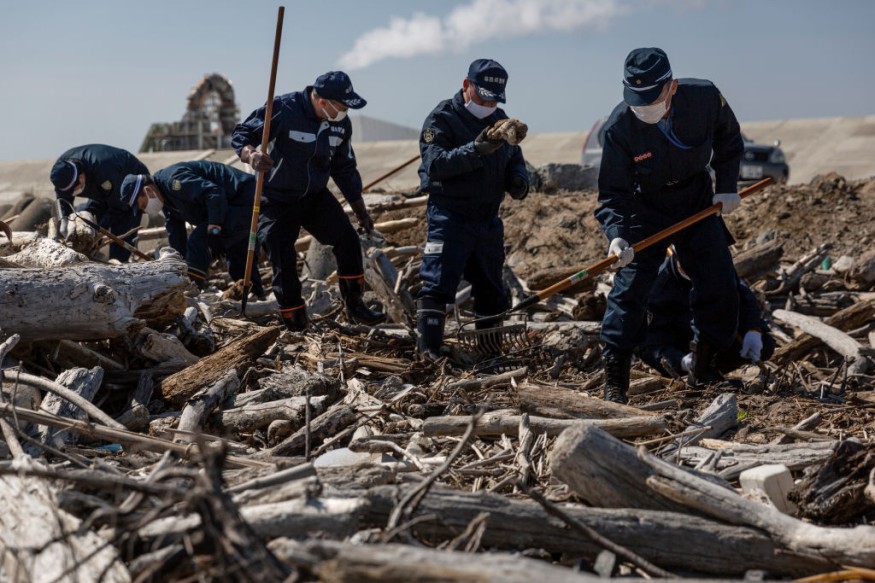A huge undersea earthquake off Japan's eastern coast ten years ago sending a wall of water smashing into the ground.
The biggest earthquake in Japan's modern history struck on a Friday afternoon in spring 2011, triggering a tsunami that smashed through seawalls, destroyed coastal towns and wreaked havoc on the Fukushima Daiichi nuclear power plant.

As radiation belched from the world's deadliest nuclear disaster since Chernobyl, more than 19,000 people died, and tens of thousands more fled.
Wide swaths of land remain polluted and devoid of any of their former inhabitants a decade later. The devastating natural disasters of March 11, 2011, and the resulting disastrous nuclear meltdown, have left an indelible impression on earthquake research, tsunami safety, and nuclear power politics.
Related Article: Japan Earthquake 2021
Great East Japan Earthquake

The Great East Japan Earthquake, which struck at 2.46 p.m. on Friday, March 11, 2011, with a magnitude of 9.0, caused significant damage in the city, and the massive tsunami it triggered caused even more. The earthquake struck 130 kilometers off Sendai's coast, Miyagi Prefecture, on Honshu Island (the main part of Japan) and was an unusual and complex double quake with a severe duration of around three minutes.
A 650 km north-south stretch of seafloor traveled 10-20 meters horizontally on average. Japan relocated a few meters east, creating a half-meter decline in the local coastline. The tsunami flooded over 560 km2, killing about 19,500 people and causing extensive damage to coastal ports and cities, with over a million buildings damaged or partially collapsed.
Nuclear Meltdown
At the moment, eleven reactors at four nuclear power plants in the area were operational, and all of them immediately shut down when the earthquake struck. Following an investigation, it was found that none of the structures had sustained any major damage due to the earthquake. Tokyo Electric Power Company (Tepco) Fukushima Daiichi 1, 2, 3, and Fukushima Daini 1, 2, 3, 4, Tohoku's Onagawa 1, 2, 3, and Japco's Tokai, totaling 9377 MWe net, were the operating units that shut down. Units 4, 5, and 6 of the Fukushima Daiichi nuclear power plant were not operational at the time, but they were nevertheless impacted. Initially, the main concern was based on Fukushima Daiichi 1-3. Unit 4 became a problem on day five.
Following the massive earthquake, a 15-meter wave cut off electricity and cooling to three Fukushima Daiichi reactors, resulting in a nuclear disaster on March 11, 2011. In the first three days, all three cores melted to a great extent.
Due to high radioactive releases over days 4 to 6, the accident was ranked category 7 on the International Nuclear and Radiological Incident Scale, resulting in a limit of 940 PBq (I-131 eq).
10 Years Later
Despite the fact that the subsequent damage resulted in the release of nuclides into the atmosphere, scientists have found no evidence that this resulted in radiation-induced health effects.
The tragedy jolted the international community into motion. A team of IAEA (International Atomic Energy Agency) experts flew to Japan a few days after the tsunami to assist engineers in assessing the impact. The Agency has continued to assist Japan for the past decade. Today, we're assisting with the current water challenge.
After ten years, the IAEA had established and approved a detailed action plan to improve the global nuclear safety framework.
Operators' engineers analyzed their nuclear plants all over the world and made modifications where possible. Almost every Member State of nuclear power plants has conducted "stress checks," and all use the IAEA's specialist peer-review missions.
ALSO READ: Supercomputer's 700,000 Year-Earthquake Simulation Could Predict When it'll Hit
For the latest news about natural calamities, don't forget to follow Nature World News!
© 2025 NatureWorldNews.com All rights reserved. Do not reproduce without permission.





